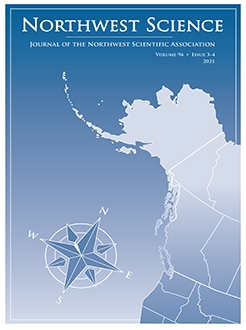We investigated fish species richness, community composition, density, and diversity along a spatial gradient of tidal influence in the shallow wetlands of the Columbia River. Our findings revealed distinct seasonal and spatial patterns in fish community composition, proportions of native and non-native fish species, and occurrence of fish that are potential juvenile salmon competitors and predators. We observed increased species richness and diversity with increased distance from the mouth of the Columbia River. Proportions of non-native species increased as well, and were especially high near the urban areas of the lower Columbia River. Species richness, density, and proportion of non-native species were higher during the summer months and positively correlated with water temperature. Juvenile salmonid density was highest in the spring, and salmonids were largely absent in the summer when non-native fish species were most abundant. Future increases in temperature, as expected with climate change, will favor further expansion of warm-water species, likely changing food web dynamics and having unpredictable effects on salmonids and other native fish populations.
How to translate text using browser tools
21 May 2021
Fish Communities in the Tidal Freshwater Wetlands of the Lower Columbia River
Sean Y. Sol,
Daniel P. Lomax,
Amanda C. Hanson,
Catherine Corbett,
Lyndal L. Johnson
ACCESS THE FULL ARTICLE

Northwest Science
Vol. 94 • No. 3-4
Summer-Fall 2021
Vol. 94 • No. 3-4
Summer-Fall 2021
Columbia River
native
non-native
piscivores
salmonids




